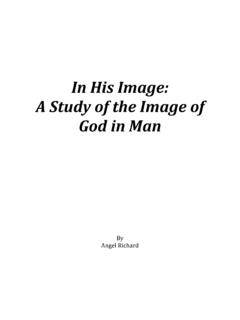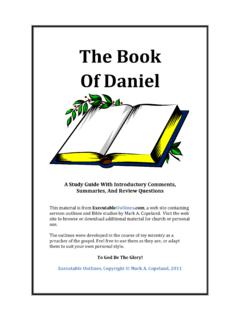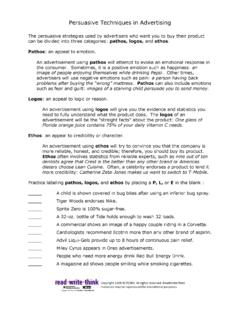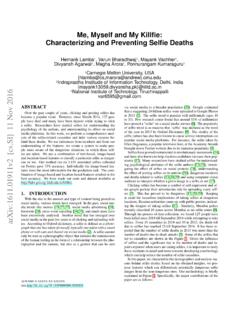Transcription of Text Study Bereshit Rabbah - TransTorah
1 Aggada (The way we tell our stories): Text Study on Bereshit Rabbah 8:1. compiled by Rabbi Elliot Kukla, 2006. God created the adam in His own image; in the image of God He created him male and female [God] created them. Genesis 1:27. Said Rabbi Jeremiah ben Elazar: When the Holy One, blessed be the One, created the rst adam, [God] created him [an] androgynos. As there it is written: When God created the adam, He made him in the likeness of God; male and female [God] created them.'. Genesis 5:2. Said Rabbi Shmuel Bar Nachman: At the time that the Holy One, blessed be the One, created the rst adam, He created him double-faced and [then] split him, and made for him two backs a back here and a back there. They asked him: But isn't it written: and He took one of his ribs [tzelah]'?
2 He said to them: [This actually means] one of his sides as we understand it, and one of the sides [tzelah] of the tabernacle.' . Exodus 26:20. Rabbi Tanchuma in the name of Rabbi Benayah and Rabbi Berechya in the name of Rabbi Elazar said: At the time that the Holy One, blessed be the One, created the rst adam, [He]. created him as a golem [an unformed physical substance]; and it was extended from one end of the world to its other end, as there it is written: My golem Your eyes have seen (Psalm 139:16). Midrash Rabbah 8. TransTorah and Rabbi Elliot Kukla, 2006 Page 1. Text Study Questions: What central di culties with the grammar of the verse from the Torah is each of these commentators trying to solve? What di culty within the context of the book of Genesis are they trying to solve?
3 How does each commentator solve these problems? How are the biblical verses used to support each rabbi's opinion? Why do you think there are three such diverse interpretations? Wouldn't one version of the creation of humanity be enough? What vision of gender does each of these interpretations of the creation of humanity lead to? Which one(s) do you prefer? Which one feels the most re ective of your own gender? Which one(s) seems most re ective of the creation of an ideal world? What do you think it means to be created in the image of God? Were you raised to believe that your gender was created in the image of God? What would Jewish education and prayer look and sound like if it was based around the central idea that all bodies and genders are created in the image of God?
4 Who would you be, if you had never been punished for gender inappropriate behavior? What would it be like to walk down the street, go to work or attend a party and take it for granted that the gender of the people you met would not be the rst thing you ascertained about them? What if we all helped each other to manifest our most beautiful, sexy, intelligent, creative, and adventurous inner selves, instead of cooperating to suppress them? . Pat Cali a TransTorah and Rabbi Elliot Kukla, 2006 Page 2.







